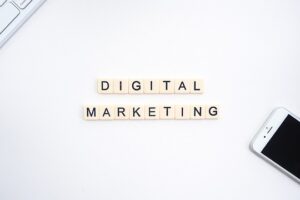
The COVID-19 pandemic has been a curse to local businesses across the globe. At the same time, it has driven many small businesses to venture into the world of digital marketing. The digital transformation of businesses usually means digitization of their business process, organizational culture, or business model. But when it comes to a small or local business, you need to create a customized business transformation roadmap that combines the process, culture, and business model into a single unit. Creating a digital transformation roadmap for a local business can help them seamlessly transfer their existing business into the digital world and grow with digital marketing.
The digital transformation of a local business consists of four important stages.
Step 1: Translating Business Goals
Any business, small or large, will have its own specific goals like OKR and hopes for the future. There are a lot of steps that have to be taken before digitizing and taking a local business online. The first step involves asking questions. You need to find details about the business, including the size, number of employees, revenue, budget, customers, products and services, and business goals. You need to know how digitally literate the owners and employees are. Once you have done this, you need to do the following steps in order:
Research and scope
It is very important to conduct proper and extensive research for informed decision-making backed by data. You have to research the audience. The audience includes existing and potential customers of the business, both online and offline. You can create a user persona using details such as their age, gender, preferences, interests, location, etc. You also have to conduct detailed market research and study the competitors and demographics. The research phase involves data collection, analysis, and evaluation to identify the possibilities, risks, and benefits. It helps to identify the scope and level of digital transformation required for the business.
Redefining Marketing Goals
Just like business goals, marketing goals for the business need to be redefined. What does the business need? Is it more awareness, sales, customers, revenue, or reach? Does the business want to focus on its locality or a wider audience? For example, if you are a local baker, you would focus on the local customers in your area. But if you are an artisan, you would want to focus on a wider area to find people. Based on the needs of the business, you can help them set short-term and long-term goals. You can also identify the suitable online channels and platforms needed for marketing based on the business goals and the user persona.
Customizing digital marketing strategies
You can create a digital marketing funnel to decide on the marketing strategies and tactics required at each stage, from getting the user’s attention to converting them and further engaging them. Decide on how to establish the online presence, generate leads, convert users, and connect with them. What specific digital marketing tactics can aid the business in growing and using them to create a detailed online marketing plan for the business?
Step 2: Bridging the Digital Gap
Bridging the existing gap is a crucial step and needs to be done before digitizing any business. It means that you have to bridge the technological and digital literacy gap. Around half of the world uses digital platforms, but only some are able to leverage them for the growth of their businesses. The Internet offers an ocean of possibilities for businesses, and basic knowledge of digital platforms and marketing is indispensable for online growth. Teaching yourself and your employees how to use various devices and the fundamentals of online marketing can help you take great strides online. If you are going to introduce new software, make sure that you educate your employees. If you have the budget to invest in customized marketing strategies, you can hire a digital marketing expert to handle your online marketing.
Step 3: Enabling Business Transformation
Once you have the necessary resources and training, you are ready to put your digital transformation plan into action. When creating a digital transformation roadmap, you need to find out what online channels can benefit your business the most.
Creating an Online Presence
The first step in digital marketing is establishing your presence online. How you create your online presence can depend on your business goals and budget. You can start your own social media page, design a unique website, or get a directory listing to mark your online presence and increase visibility. Getting your business listed on Google My Business (GMB) is a must-do for any local business. Providing correct details on GMB, photos, and reviews will help your business rank in Google’s local pack. You can get more users to your business by optimizing your website for location-based searches through local SEO.
Social media, the game changer
Social media platforms have the ability to make or break your business. You can use social media sites to connect with users, make direct sales, get reviews, provide remedies, and build your reputation. Some businesses have grown entirely using social media. By creatively using social media, you can generate more leads and build trust.
PPC for Faster Growth
PPC, or Pay Per Click, is a model of online advertising that can help you target the users who are looking for your products and services exactly when they are looking for them. You can place your ads on search engines like Google Ads, YouTube, social media, or other websites and target your ads based on location, device, age, or preferences on the days and times you prefer. You can run seasonal ad campaigns or festive sale offer campaigns to get more people to your local store.
Data-Driven Growth with Analytics
The greatest advantage of digital marketing is the insights that can be gained from data. Be it gaining more organic traffic through SEO or getting more clicks for ad campaigns, analytics helps you improve and optimize your marketing strategies. You can use tools like Google Analytics, Facebook and Instagram insights, YouTube analytics, etc., to find out about user behavior and optimize your marketing strategy.
Step 4: Accelerating Online Growth
Once you establish an online presence and optimize your online strategy, you will be able to find and connect with your customers and other people who are interested in your business. It is where you change gears and take steps to grow online.
Creating a loyal customer base
Social media is a great platform to build trust and create a positive image for your business. You can create a loyal customer base and use tactics like email marketing and loyalty marketing.
Growing as a Brand
The goal of every business is to have a name that people recognize. You can create your brand and give it a voice, identity, and personality online. It involves engaging with customers regularly, managing your reputation, and maintaining a positive brand image.
The bottom line
Every local business can grow using digital marketing strategies that cater to their business needs. Local businesses can make use of various digital marketing tactics in every stage of growth, from creating an online presence to growing and thriving online as a brand. When creating a digital transformation roadmap for a local business, you need to consider the demographics, preferences of the audience, market trends, business goals, risks, and scope for growth. It can involve mainly four stages: the research phase, resource and training phases, digital transformation, and finally, the growth phase. A digital marketing strategist can create the ideal digital transformation roadmap for a local business based on its unique needs.





